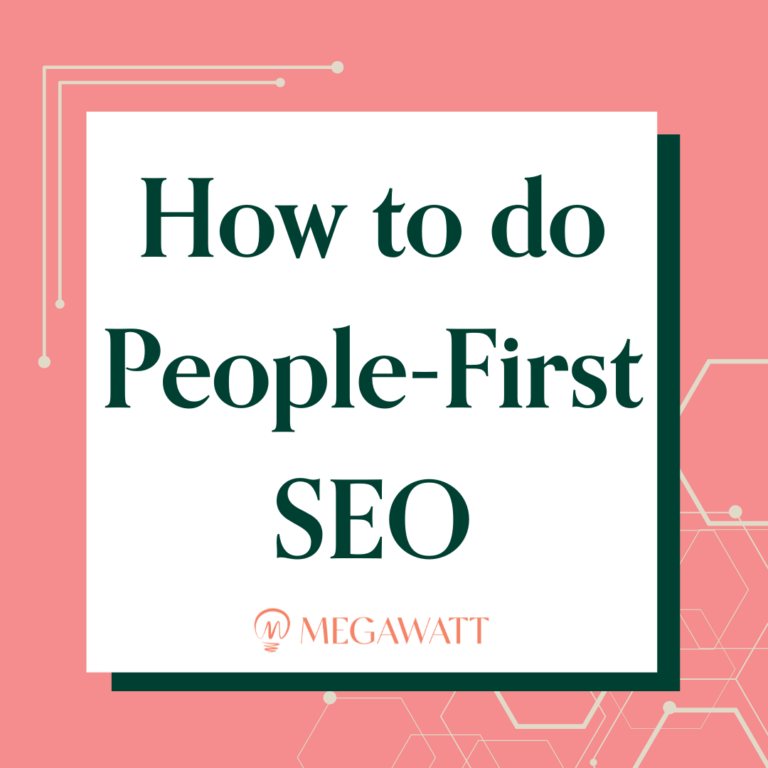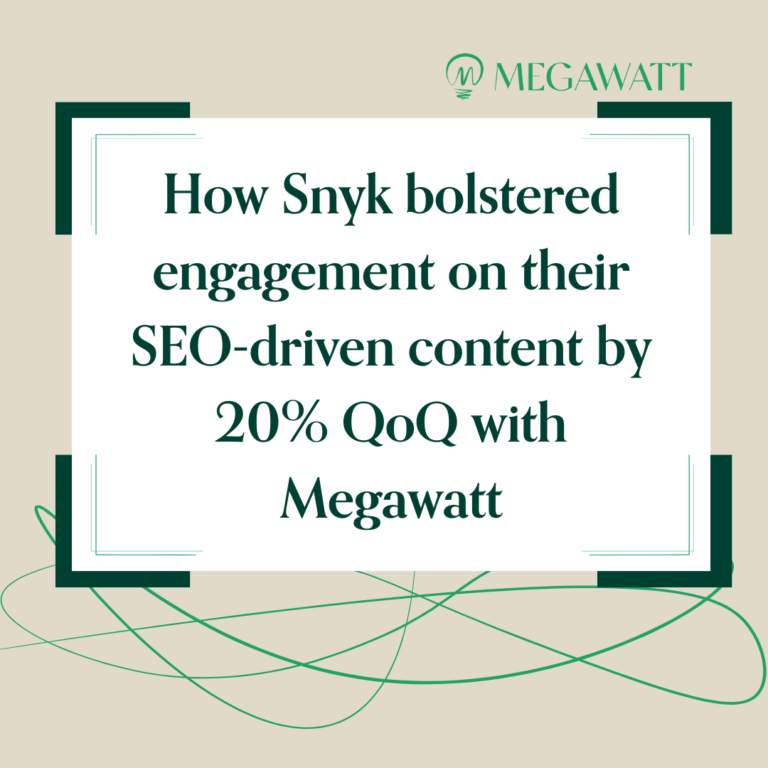77% of decision-makers claim they use social media sites to influence their purchasing decisions. As a result, companies with no B2B social media strategy in place are missing out on major uplift for MQLs, SQLs, and conversions.
In this post, we’ll provide a comprehensive overview of how to create an organic B2B social media strategy that drives more meaningful (and lucrative) connections with your target audiences.
Other alternative social media sites that you may want to consider, depending on your audience, include Ello, Minds, and MeWe.
What Is a B2B Social Media Strategy?
A B2B social media strategy is a carefully planned blueprint that lays out the kind of original and curated content your brand will post, the most relevant social media platforms on which to post, and the appropriate analytics to study for insights into improving it.
Which Social Media Platforms Are Best for B2B?
For your social media marketing to be really effective, it’s important to post content on the right social media channels, such as:
- LinkedIn: With more than 950 million members and about 63 million registered companies, LinkedIn is the most obvious platform for B2B marketers. As such, LinkedIn is 277% more effective at generating leads than Facebook and Twitter.
- X (formerly Twitter): With over 396.5 million monthly active users, X is particularly good for brand awareness, establishing a brand voice, community building, and lead generation. However, companies should keep in mind its recent loss of advertisers as they devise social strategies.
- Facebook: Naturally, Facebook is on this list, being the most popular social platform with 2.8 billion monthly active users — which means posts are bound to catch the eyeballs of some critical decision makers.
- Other platforms: Instagram, TikTok, and Reddit are also opportunities for marketers to expand their reach — and to keep their finger on the pulse of the latest B2B trends. Keep in mind, however, that many Reddit forums don’t allow posts about sales or products — so your social teams will have to get a bit more creative about engaging with these audiences.
There are also some other alternative social media platforms you may want to consider depending on your audience.
These social media models are not a monolith; ages, job titles, and intentions all vary across LinkedIn, X, and beyond. Your teams will need to sharpen up different strategies for different platforms in order to get their voices heard by those who need to hear it.
3 Differences Between B2C and B2B Social Media Strategies
Three major differences social media teams should keep in mind when making B2C and B2B content are:
- Audience: Social media strategies must be built on a strong foundation of understanding your target audience. While B2C focuses on targeting individual consumers, B2B intends to target other businesses and their key decision makers.
- Content: Naturally, different audiences will require different types of content. While B2C audiences might find white papers a snooze or just plain confusing, a B2B audience will likely think they’re a valuable resource.
- Channel value: While all social media channels have some level of value for B2B social media pros, they’ll vary in effectiveness depending on the reason your readers are even surfing social channels.
Here are a few other ways that B2C and B2B buyers differ:
![]()
Ultimately, these differences mean B2B audiences will have different wants and needs from B2C audiences when looking at social media content for answers — and B2B social media strategies must follow suit.
Now that we’ve covered the basics, let’s move onto the good stuff: The five must-know strategies to make your B2B social media presence pop.
5 Strategies To Get the Most Out of Your B2B Social Media Strategy
1. Identify Your Goals
Start your social media strategy by figuring out what your organization wants to get out of social media marketing, and be realistic about whether it’s possible.
Here are some examples of what long-term and short-term goals for your social media strategy might look like:
- Reach [1,000] new customers this month.
- Drive [10X] more website traffic this quarter.
- Position your brand as an industry source of thought leadership.
- Elevate recruiting efforts and fill [2] positions.
- Reach new customers and B2B decision makers.
Remember, your strategy can have multiple objectives. But knowing upfront specifically what you want to accomplish — in what time frame — will help you clarify your tactics and plan your social content.
2. Create a Cross-Department Strategy
You need the right people involved to attract and keep the attention of your desired social audience. Depending on your social media marketing goals, several departments and roles may need to be involved, including:
- Marketing.
- Sales.
- Customer Success.
- C-Suite.
Rather than expecting (or granting permissions for) every single team member to log in to your social channels regularly, look for ways to best use your teams to ensure that the right social audience gets the right messages at the right time.
For example, customer service reps could be kept in the loop on any inquiries coming through your social platforms with a dedicated social media Slack channel. To learn how to integrate X into a Slack channel, check out this article on Slack app integrations.
3. Determine Your Strategy Execution Leaders
Now that you have determined your goals and which teams need to be involved in your strategy, it’s time to decide who will lead the team to successful strategy execution.
While many of us use social networks in our personal lives and may equate it to a hobby, it is a legitimate channel for amplifying your sales, marketing, recruiting, and employee engagement efforts. Your teams will need a plan for delegating social media responsibilities. Will you add those duties to an existing role, or will you hire a full-time person to create content and manage your accounts.
It’s critical to note that having a successful strategy will take more time than you may think — almost 12 hours a week, in fact. Content professionals should consider the commitment these responsibilities will take before jump-starting their new social strategies.
If you don’t have the necessary expertise, a great option is to outsource your social strategy to a third-party vendor that specializes in social marketing.
4. Create a Social Media Content Calendar
Content calendars allow your entire team to get organized regarding content types and posting schedule. It also allows the team to more clearly identify key themes you want to address on your social channels in parallel with broader company initiatives. This can be done monthly or quarterly to make sure your social media calendar is truly strategic and in lockstep with your goals.
Determine What Type of Content to Post
The type of content you post will depend on each social platform to a large degree.
- LinkedIn: Since brands on average see a 33% increase in purchase intent on LinkedIn, you should be posting any kind of relevant content you can. This can be about job openings at your company, updates for products or services, and long-form, informative articles.
- Twitter: For the short-post format on this platform, your content can include quick updates, recent news pieces, quizzes/polls, podcasts, and anything else that might be a conversation starter.
- Facebook: On your company’s Facebook page, you should post Stories for behind-the-scenes or company culture content, videos (explainer, demos, how-to’s) and curated content that provides value to your followers.
Reacting to pop-culture trends is one great way to boost awareness. Take this LinkedIn post from SEMRush for example. The popular SEO SaaS tool capitalized on a well-known and trending meme and made it relatable for content marketers, resulting in over 1,183 likes, 39 comments, and 66 shares. That’s pretty high engagement for LinkedIn.
![]()
What can we learn from SEMRush? That a little social listening can go a long way. Without proactive social engagement, organizations miss out on the real-time value of social networking.
Related Content: 5 Tips to Write B2B Content Faster —Without Sacrificing Quality
5. Define How You Measure Success
For every goal you have, there is a metric to help you understand whether or not you’re reaching it. On X, you can see your metrics in the X Analytics section. For LinkedIn, Instagram and Facebook, you will need to create your account as a business page. From there, you will be able to see your metrics.
The most crucial social media metrics you should be looking at when measuring success are:
- Engagement: Likes, comments, and shares.
- Awareness: Impressions and reach.
- Follower growth: Number of new followers each week.
Pro Tip: When you outsource your social media marketing, your new external team can track all your necessary metrics for you.
What’s My Next Step?
Here’s the thing about B2B social media strategies: They must be reactive and constantly evolving. The social media approaches that actually make or break conversions are the ones that stay timely, relevant, and on top of B2B decision makers’ shifting needs.
At Megawatt, we are passionate about the role social media plays in amplifying content strategies for B2B tech companies.
We hope you learned how to improve your B2B social media strategy! But if you just want an expert B2B content marketing agency to do it for you 👇






